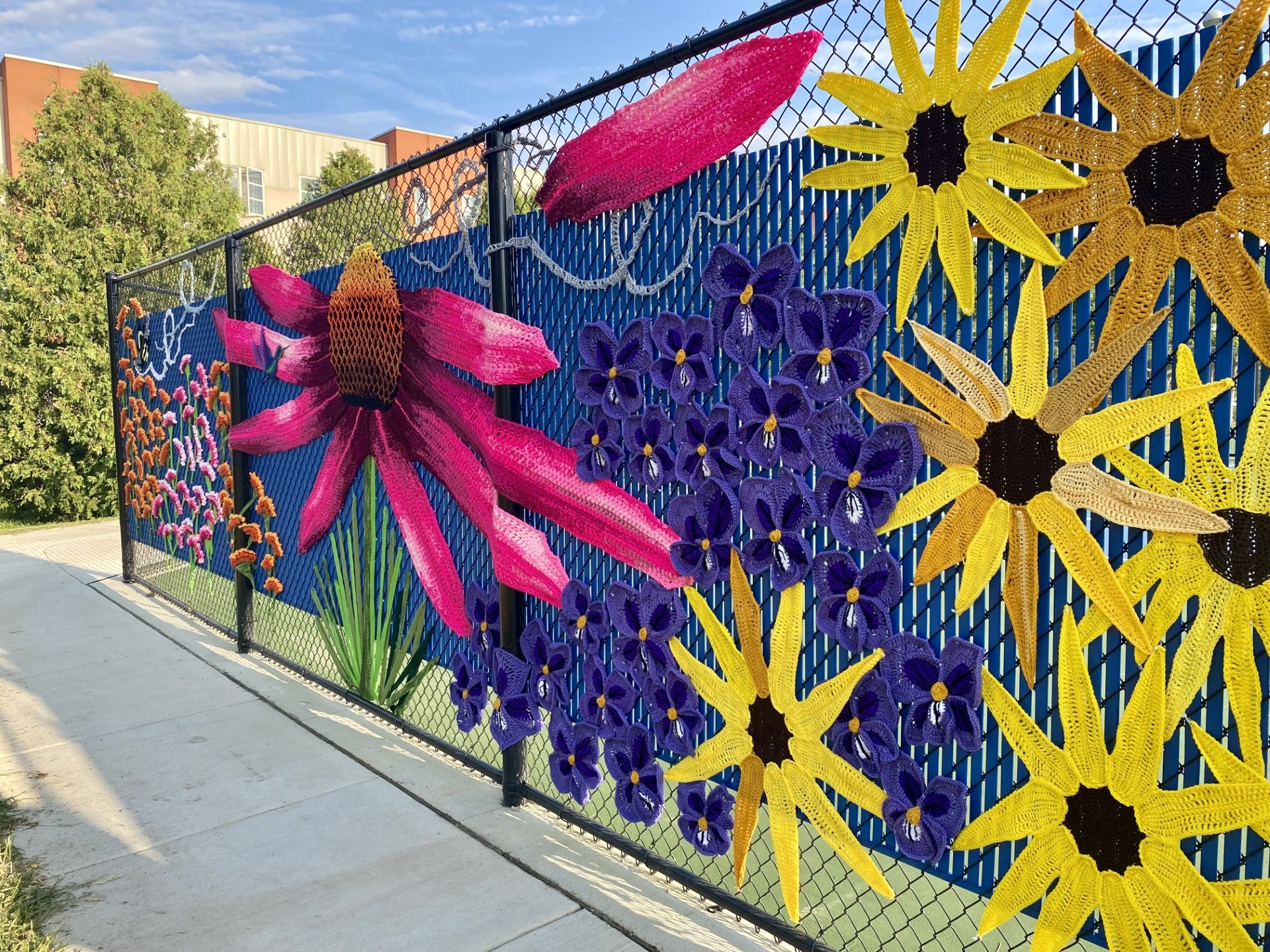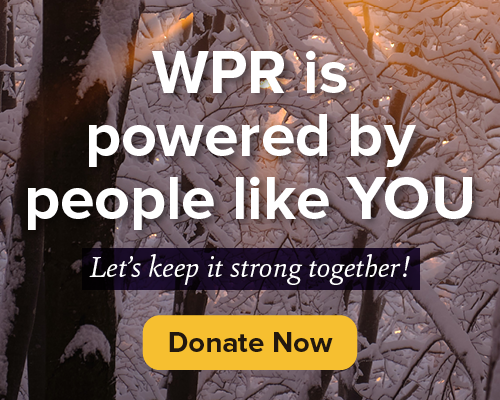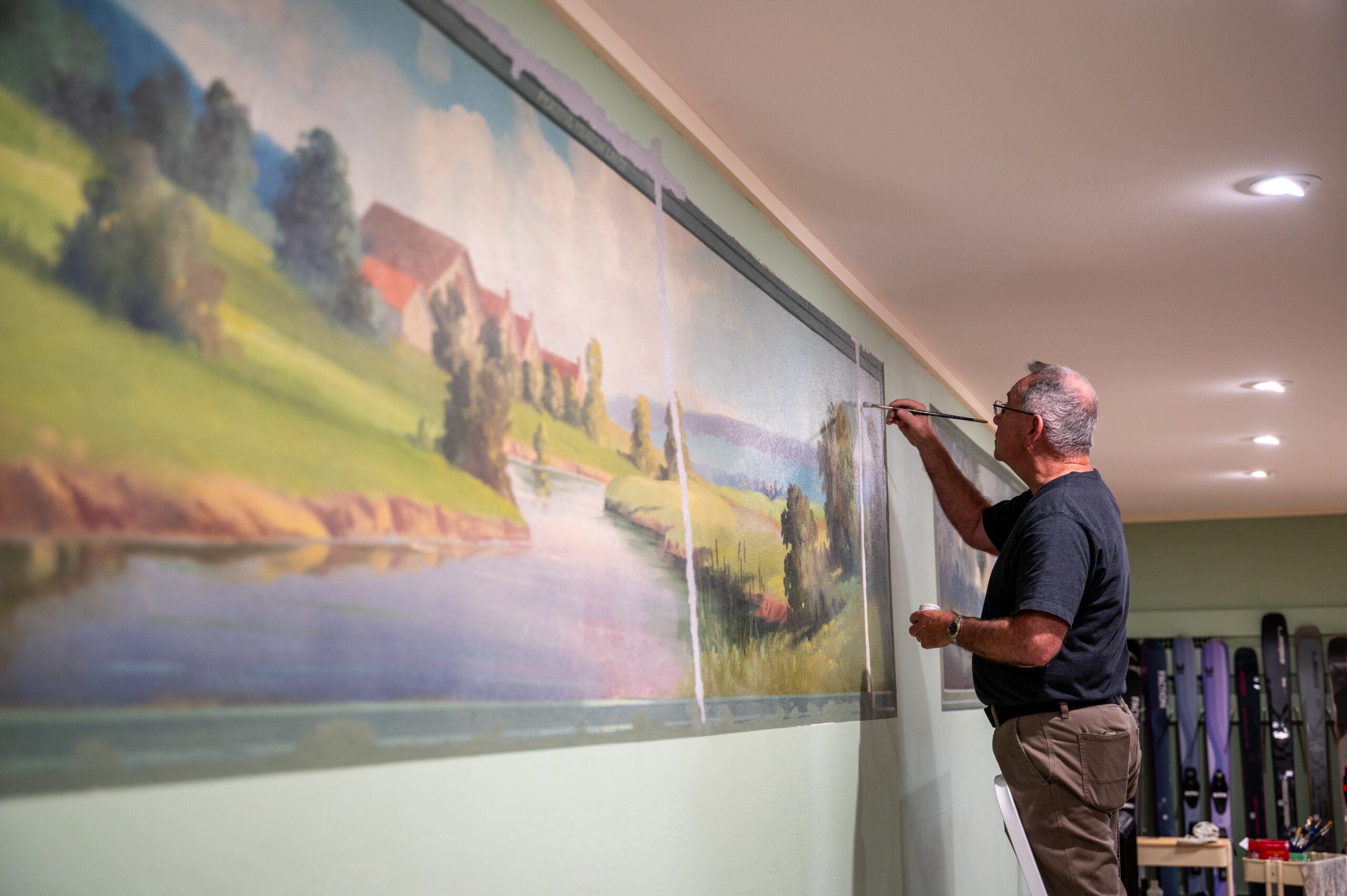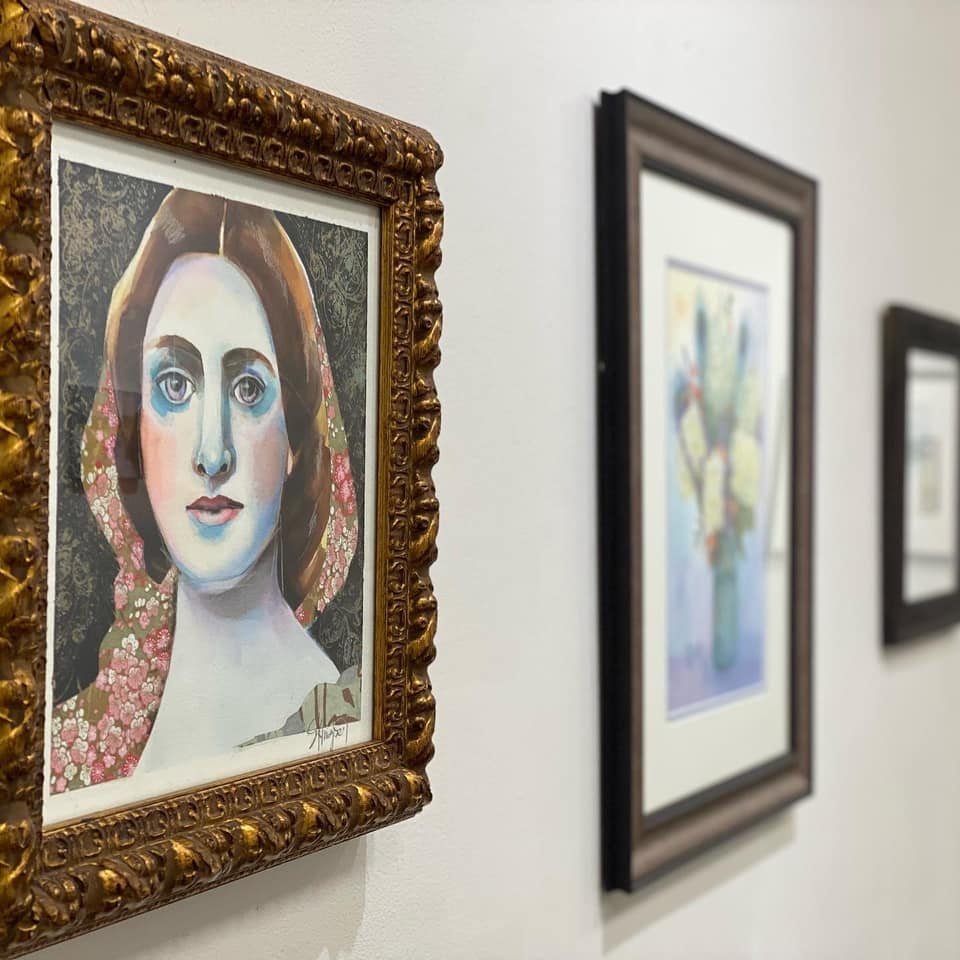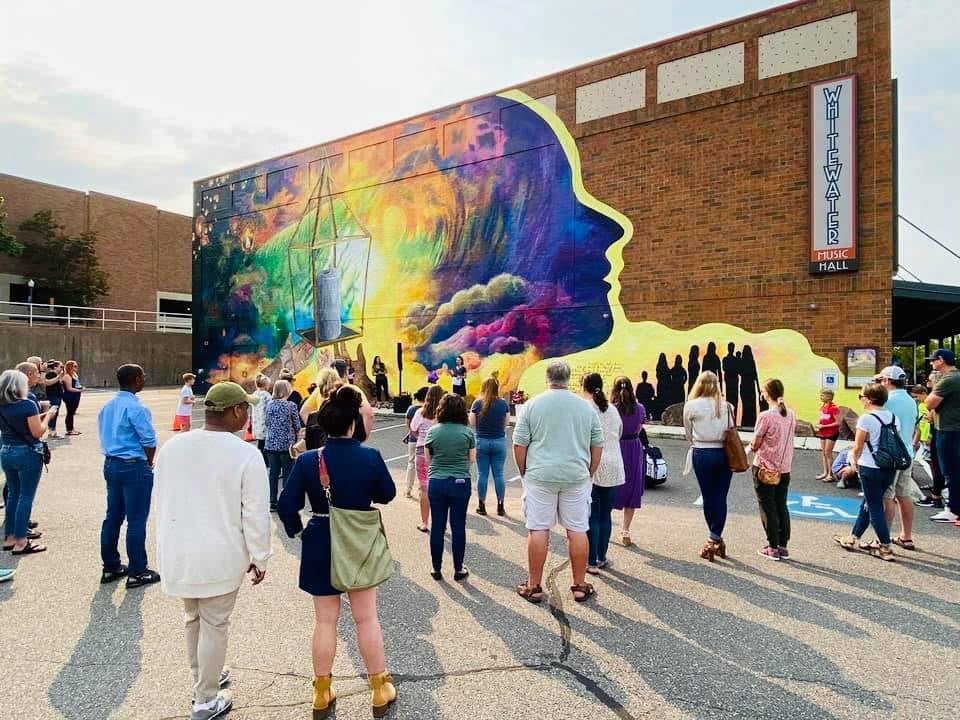Summer is on the way and Wisconsin is in bloom with fragrant blossoms — and ones made of yarn, too.
“Wildflowers of Wisconsin” is a fiber art installation made up of oversized crocheted flowers attached to a chain-link fence at McKee Farms Park in Fitchburg. Originally unveiled in the fall, the outdoor mural has withstood the Wisconsin winter and is on display to the public through August.
Jillian Talarczyk is the founder and creative director of the Madison Public Art Project, the nonprofit organization that commissioned the mural. She told WPR’s “Wisconsin Today” that the exhibit “is about raising awareness about the realities of climate change and encouraging greater stewardship of the land for generations to come.”
News with a little more humanity
WPR’s “Wisconsin Today” newsletter keeps you connected to the state you love without feeling overwhelmed. No paywall. No agenda. No corporate filter.
Talarczyk said that there’s “a special placemaking aspect” to this mural because it features only flowers native to Wisconsin: a black-eyed Susan, a coneflower, two kinds of milkweed (swamp and butterfly) and a wood violet, the official state flower. A monarch butterfly, a honeybee and a hummingbird — all crocheted — represent the pollinators that rely on these flowers.
The project leaders invited members of the community to participate in making the mural. Leading up to the installation, local artists Sapphira Afifi and Karen Jahns held monthly workshops around the Madison metro area where community members could gather to crochet petals for the design, with patterns and supplies provided by the Madison Public Art Project and its sponsors.
“We knew that we wanted to welcome the community into the art-making process with this project. It’s demystifying it in a way,” Talarczyk said. “It was just so amazing to see what a hunger there really was, and how many people leapt at the opportunity to participate in something so beautiful.”
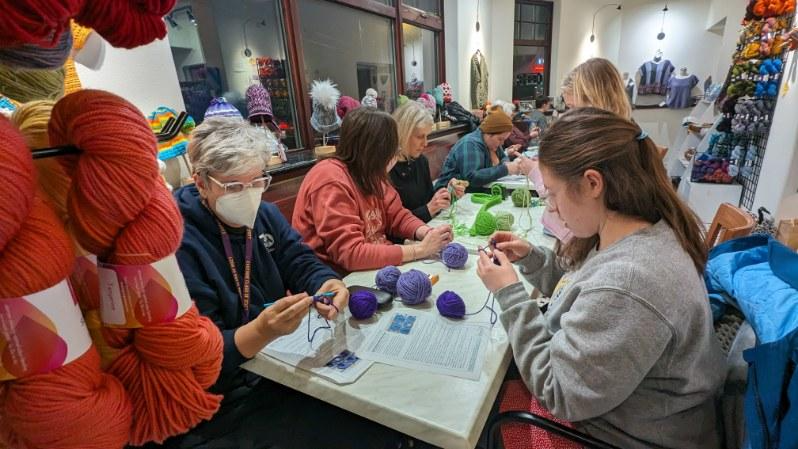
Kiersten Darling is a fiber artist based in Milwaukee, where she runs a finishing service called Weave in My Ends. She was brought in as the lead designer for “Wildflowers of Wisconsin,” a project she said required a creative approach and a lot of planning.
“I looked at how I could construct a flower out of crochet and have it be structurally sound — to be able to install on a fence and be there for a year through Wisconsin weather, especially Wisconsin winters,” Darling said.
To keep the mural from fading through rain, snow or sunshine, Darling used acrylic yarn. She said the team spent two-and-a-half days securing the mural to the fence after all the component parts had been crocheted.
Because it was a community-based project, Darling had to make sure that the patterns were beginner-friendly so anyone could participate in the monthly workshops. However, she worked solo to freehand the bright pink coneflower at the center — the largest flower in the mural — which required her to hold four strands of yarn together with a crochet hook that’s “bigger than your thumb,” she said.
“It ended up being over 10 feet wide. I gained some muscle strength making that one,” Darling added.

Fiber arts as a lifeline for people with chronic illness, pain
Darling identifies as a “spoonie,” a term coined by a blogger in 2003 to describe the experience of having chronic illness. Darling said that 10 years ago, she developed a “mystery headache” that never went away. Living in constant pain, her skills as a fiber artist became an unexpected source of comfort.
“I found very quickly that I could still knit and crochet while in a lot of pain, and actually it kind of helps me not notice the pain,” she said. “Knitting and crochet has really been a savior to my everyday life and just being able to manage being a spoonie.”
In an essay called “How Knitting Saved My Life” published in a knitting magazine, Darling elaborated on the significance of fiber arts to the spoonie community.
“Over the years, I’ve come to notice that chronic illness and knitting often seem to go hand in hand. There are so many knitters and crocheters in our community that fight silent wars with their bodies alongside me,” she wrote. “Maybe it’s because both require you to slow down, and to take things one row at a time, one day at a time. Or maybe it’s how the stitches become rhythmic and meditative, like little massages for our overworked brains. Or how projects that engage mind, body, and soul can be incredibly healing.”
Darling told “Wisconsin Today” that she has found a supportive community of fellow fiber artists who are also spoonies on Instagram.
“That’s really helped with my mental health and my physical health,” she said.
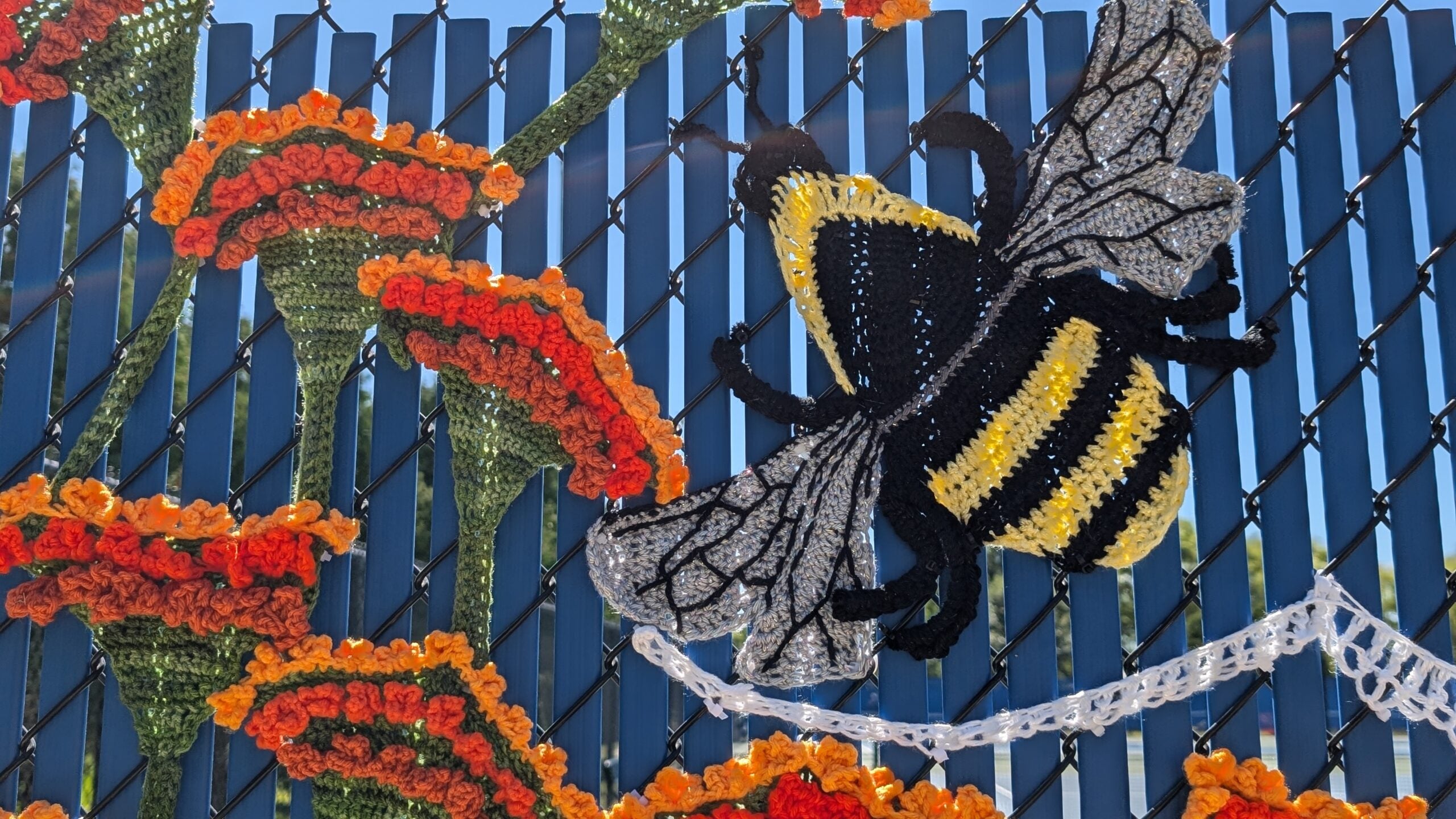
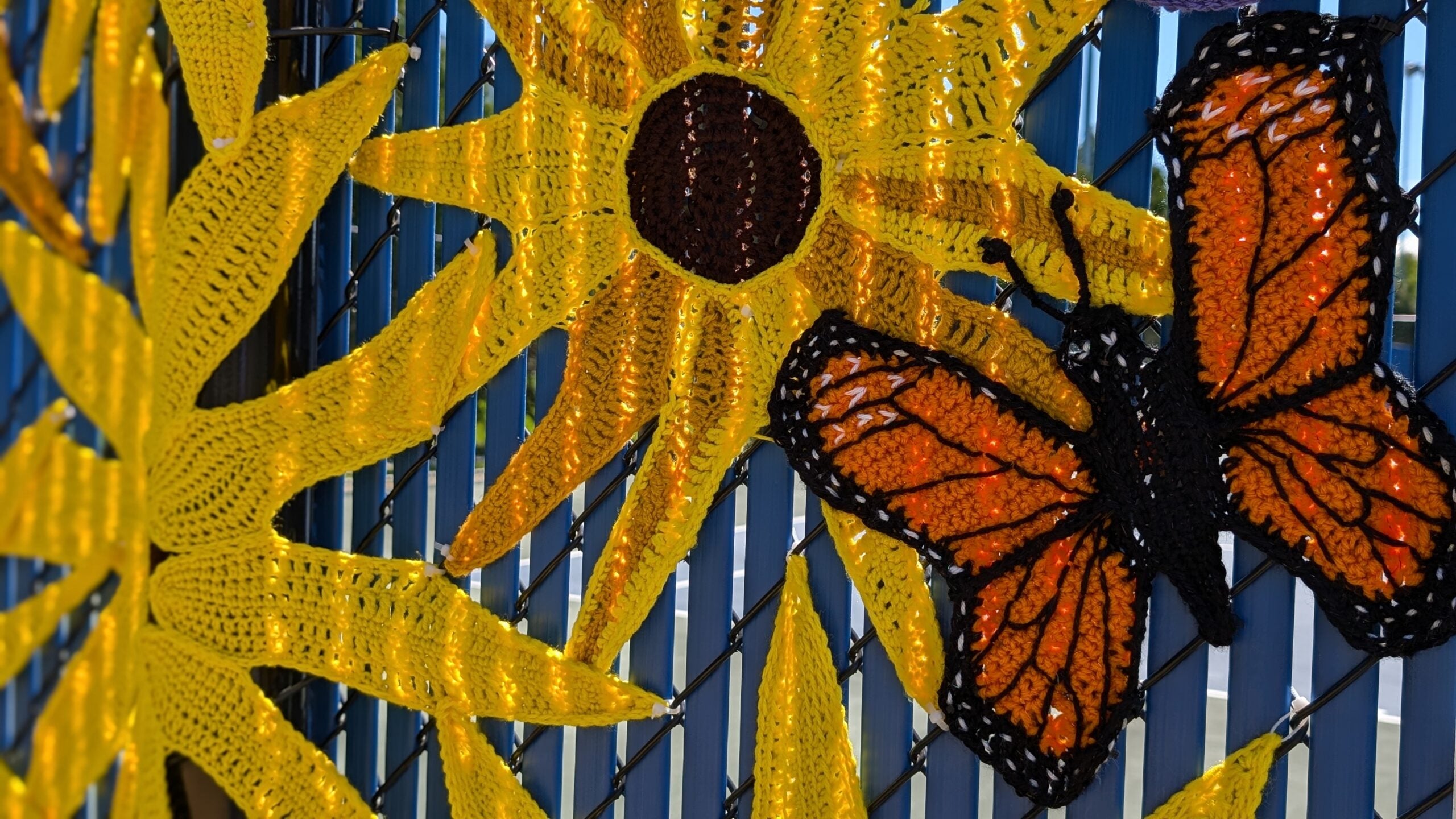
Art is everywhere
While fiber arts have a reputation for being “your grandma’s craft,” Darling said knitting and crochet are finding new audiences on social media, where fiber artists young and old share their designs and finished projects. She believes that creations made with fabric and yarn should be taken more seriously in the art world.
“When we talk about art, we need to include the fiber arts in it because there’s just so many different things that you can do with it and different messages that you can spread, whether that’s with yarn bombing or making your own garments,” she said.
Because the fiber arts are so ubiquitous in everyday life — socks, blankets, rugs — it can be easy to overlook them. But Darling said it’s an exciting time to get involved.
“There’s art all over. If you aren’t looking for it, sometimes you might miss it,” she said. “Literally anything that you could imagine is being made with yarn at this point.”
For Talarczyk, she hopes the wildflower mural can be an opportunity for people to reflect on their own relationship to the environment around them and perhaps be inspired to reduce waste in their own households or maintain a pollinator-friendly garden.
“The beauty of public art, to me, is that it pushes the limit of what’s possible, and it can inspire a fresh viewpoint,” she said.
“Wildflowers of Wisconsin” is free and open for the public to view at McKee Farms Park in Fitchburg through August 2025.

